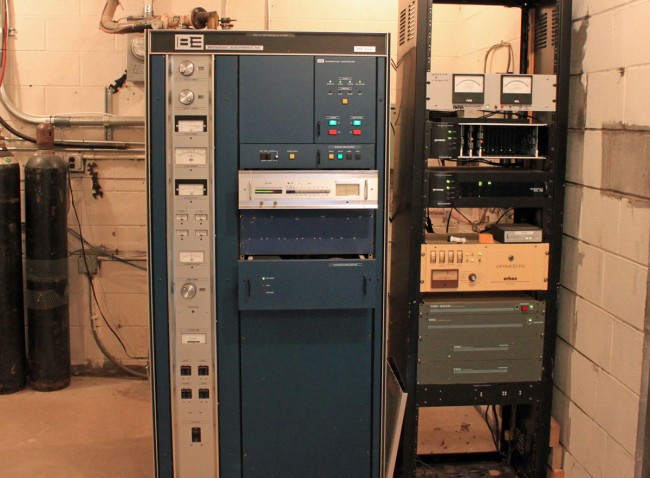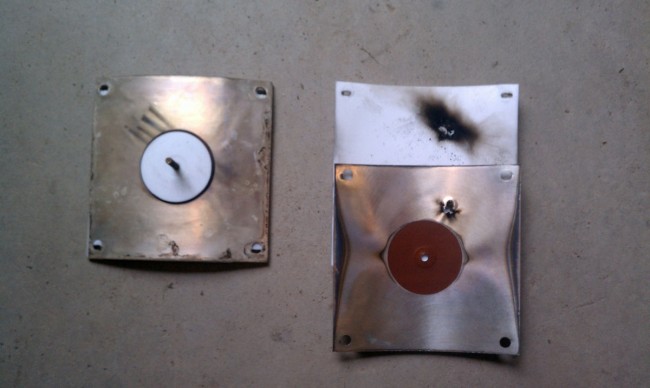Alternate title: More blown-up stuff
This Broadcast Electronics Fm 3.5A will be thirty years old in April. We should have a party!

Unfortunately, this transmitter is not doing too well these days. The PA high voltage feed through capacitor has arced over to the PA cavity, causing the station to be off the air.

Naturally, this happened over the weekend, parts will not arrive until Tuesday at the earliest, and the station is without a backup transmitter.
Obviously, trouble shooting this was a two-person job. Never work alone on HV equipment. The symptom was the main circuit breaker was tripping after the HV on command. Starting from the transformer end of the HV power supply circuit and working toward the anode of the PA tube, all of the components were tested by isolating each component then turning the HV on. Special care was taken to discharge all components after each test. The capacitors and bleeder resistors were reconnected at the same time. There is too much risk involved with charged 8 KV capacitors and no way to bleed that charge to ground. Everything worked up until the PA cavity was reconnected (without the tube), then the breaker tripped again. Thus, the above feed-through capacitor was removed and disassembled, revealing the damage.
The question is, how long should transmitting equipment last? After all, if one were running a freight delivery company, you would not be driving around in thirty-year-old trucks, would you? No, not if you wanted to stay in business. Like all electro-mechanical equipment; transmitters, consoles, STLs, antennas, computers, etc wear out. A smart plan would be to have a replacement schedule and be putting money into a capital equipment replacement fund. Equipment life varies with the type. Getting twenty years out of a main transmitter is a pretty good service life, going beyond that is pressing one’s luck. Ten years on any one computer is a very long time. Then there are certain transmitter manufactures that drop support on older units, which makes it difficult to keep them operating. Owners and managers need to be cognizant of the age and condition of critical infrastructure. As field engineers, how much time do we devote to keeping antiquated equipment running, or should we even be servicing it at all? As independent contractors, we incur a liability whenever we touch something. Where does the ownership’s responsibility lay in providing safe, functional equipment for their stations? All interesting questions.
